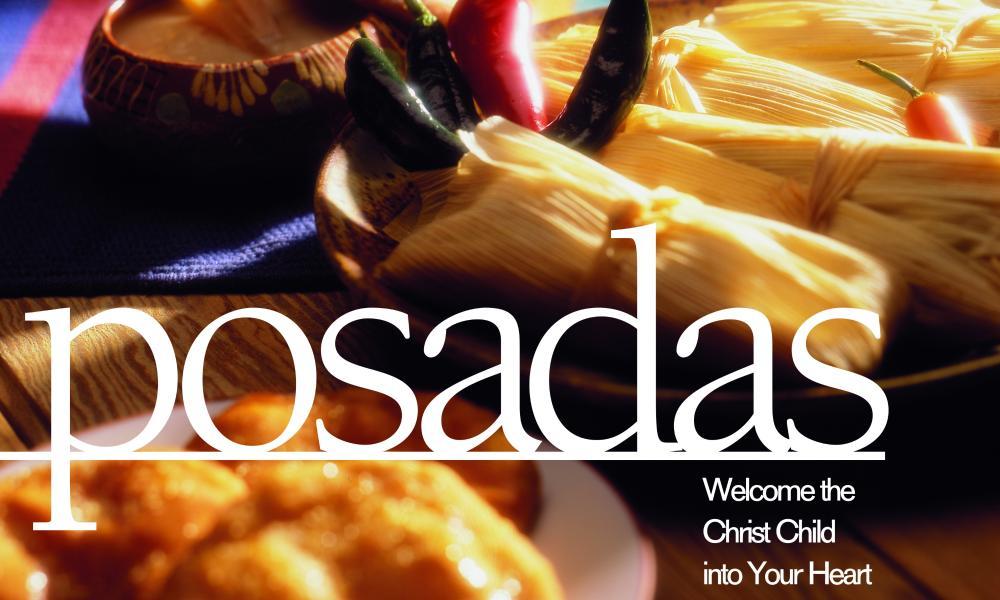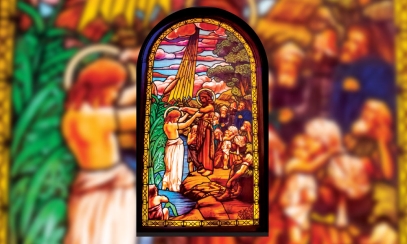
Posadas
Welcome the Christ Child into Your Heart and Home – Mexican Style
Welcome the Christ Child into Your Heart and Home – Mexican Style
“Now it came to pass in those days, that a decree went forth from Caesar Augustus that a census of the whole world should be taken...And all were going, each to his own town, to register. And Joseph also went from Galilee out of the town of Nazareth into Judea to the town of David, which is called Bethlehem—because he was of the house and family of David—to register, together with Mary his espoused wife, who was with child.
And it came to pass while they were there, that the days for her to be delivered were fulfilled. And she brought forth her firstborn son, and wrapped Him in swaddling clothes, and laid him in a manger, because there was no room for them in the inn.” Luke 2:1-7.
The time for Posadas is rapidly approaching. This Mexican festival, which begins Dec. 16 and ends on Christmas Eve, commemorates Mary and Joseph’s journey to Bethlehem and their attempts to find lodging at an inn, the English meaning of the word Posada.
During this nine-day celebration, invited guests arrive at the house where the Posada will take place, always in the evening. (In traditional communities, a girl is dressed as the Virgin Mary and a boy as Joseph, and sometimes even a burro is present.) The guests congregate at the door with lighted candles and sing: En el nombre del Cielo os pido posada, pues no puede andar mi esposa amada. In the name of Heaven, I ask you for lodging, because she cannot walk, my beloved wife.
A group inside answers, in song:
Aquí no es mesón; sigan Adelante. Yo no puedo abrir, no sea algún tunante. This is no inn, keep on going. I won’t open the door, in case you are a truant.
Many verses are sung in this fashion, with those outside asking for a place to spend the night and those inside the house repeatedly refusing, until they ‘discover’ the identity of those who seek refuge from the elements. Finally, they welcome the guests inside as they sing: Entren, Santos Pereginos, reciban este rincón; no de esta pobre morada, si no de mi corazón. Enter, Holy Pilgrims, accept this dwelling; not of this humble house, but of my heart.
Then the party begins, with a traditional meal of tamales (meat and peppers rolled in cornmeal dough and steamed in corn husks) and atole (a hot drink often flavored by fruit, nuts or chocolate), with buñuelos (thin, fried pastries) for dessert.
As the evening of food and fun draws to a close, the guests receive aguinaldos—small, going-away gifts of cookies, fruit, and candy—and gather in front of the nacimiento (nativity scene) to sing villancicos, Mexican Christmas carols that speak of the good news proclaimed in the Gospel according to St. Luke: “a Savior has been born to you, who is Christ the Lord.”
Though Posadas are very closely tied to the Christian tradition, they actually have their origins among the Aztecs, who celebrated the arrival of the god Huitzilopochtli each year between Dec. 7 and 16. Under Spanish rule, Catholic priests incorporated this ancient tradition in a new set of religious festivities.
If you’d like to incorporate the spirit of a Posada into your holiday celebrations, here are recipes for the crunchy buñuelos and the heartwarming atole.
Buñuelos
- 2 cups flour
- 2 Tbsp sugar
- ½ tsp. salt
- 2 eggs
- 6 Tbsp milk
- 2 Tbsp butter or margarine, melted Oil for deep frying
In a medium bowl, combine flour, sugar, and salt. In small bowl, beat eggs; add milk and melted butter or margarine. Add egg mixture to flour mixture; stir with fork until they hold together.
Turn dough onto a lightly floured surface. Knead gently until smooth 3-5 minutes.
In electric skillet or heavy saucepan, slowly heat oil (1 ½-2 inches deep) to 375° on deep-frying thermometer.
Divide dough into 24 pieces. Shape each into a ball; roll out each, on lightly floured surface, to make a 5-inch round. Gently drop rounds, a few at a time, into hot oil. Cook, turning with a slotted utensil, until they are lightly browned on both sides—about 2-3 minutes. Drain on paper towels.
Drizzle with cinnamon-sugar syrup while still warm. Makes 2 dozen.
Cinnamon-Sugar Syrup
Makes 1 ½ cups
- 1 ½ cups sugar
- 1 cup water
- 2 Tbsp corn syrup
- ½ tsp. cinnamon
In small saucepan, combine sugar, water, corn syrup, and cinnamon. Boil uncovered 15 minutes until slightly thickened, or to 220° on a candy thermometer.
Atole
- 6 Tbsp rice flour, masa or cornstarch
- 3-4 Tbsp firmly packed dark brown sugar
- 3-4 Tbsp sugar
- Dash of salt
- 2 cups of milk
- 2 sticks cinnamon
- Ground cinnamon (optional)
Combine first ingredient, both sugars, and salt in a medium saucepan. Gradually add 2 cups of water, stirring until mixture is smooth. Stir in milk and cinnamon sticks. Bring to a boil over medium heat, stirring frequently. Cook at a full boil for 2 minutes, stirring constantly. Remove cinnamon sticks and pour atole into mugs. Sprinkle with ground cinnamon, if desired.
This article was originally published December 2001.



